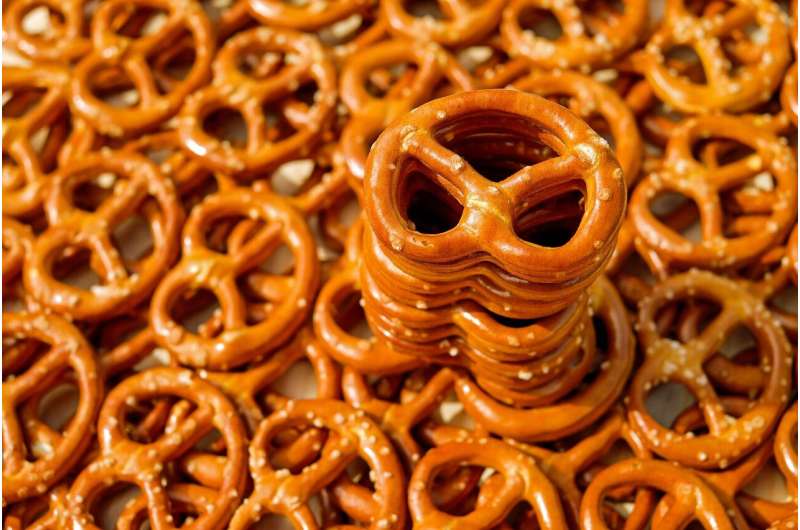Cutting acrylamide in fried and baked snacks

In 2002, the discovery of acrylamide in certain snacks rattled consumers and the food industry. Acrylamide, a probable human carcinogen, forms by a chemical reaction during baking or frying. Although experts say it's impossible to completely eliminate acrylamide from crackers, cookies and potato chips, food manufacturers are working to reduce the compound's levels, according to an article in Chemical and Engineering News (C&EN), the weekly news magazine of the American Chemical Society.
The Malliard reaction is a chemical process in which amino acids and sugars react during baking or frying to give foods a brown crust and toasty flavor. However, in addition to mouthwatering organic compounds, the reaction produces acrylamide, Senior Editor Melody Bomgardner writes. Acrylamide forms when the amino acid asparagine reacts with reducing sugars, such as fructose. Although it isn't possible to completely remove acrylamide and still have the snacks people enjoy, food manufacturers are exploring strategies to reduce levels of the probable carcinogen in foods.
The ingredient suppliers Novozymes, Kerry and DSM all offer products for acrylamide reduction based on the enzyme asparaginase. When added to uncooked foods, this enzyme converts asparagine to aspartic acid, which does not form acrylamide. Using a combination of genetic and bioinformatics tools, Novozymes found a way to make large amounts of several versions of asparaginase tailored to specific foods. For organic food companies that wish to avoid genetically modified organisms (GMOs), Kerry has licensed a non-GMO, asparaginase-producing yeast that can be added to uncooked foods. In a different approach, the Idaho potato producer J.R. Simplot introduced a GM potato variety that produces lower levels of asparagine and sugars. With stricter regulations on acrylamide levels expected within the next 2 years, work on acrylamide reduction using other approaches, including gene editing, continues.
More information: "How ingredient makers are getting acrylamide out of foods," cen.acs.org/business/specialty … ylamide-foods/97/i35
Provided by American Chemical Society

















